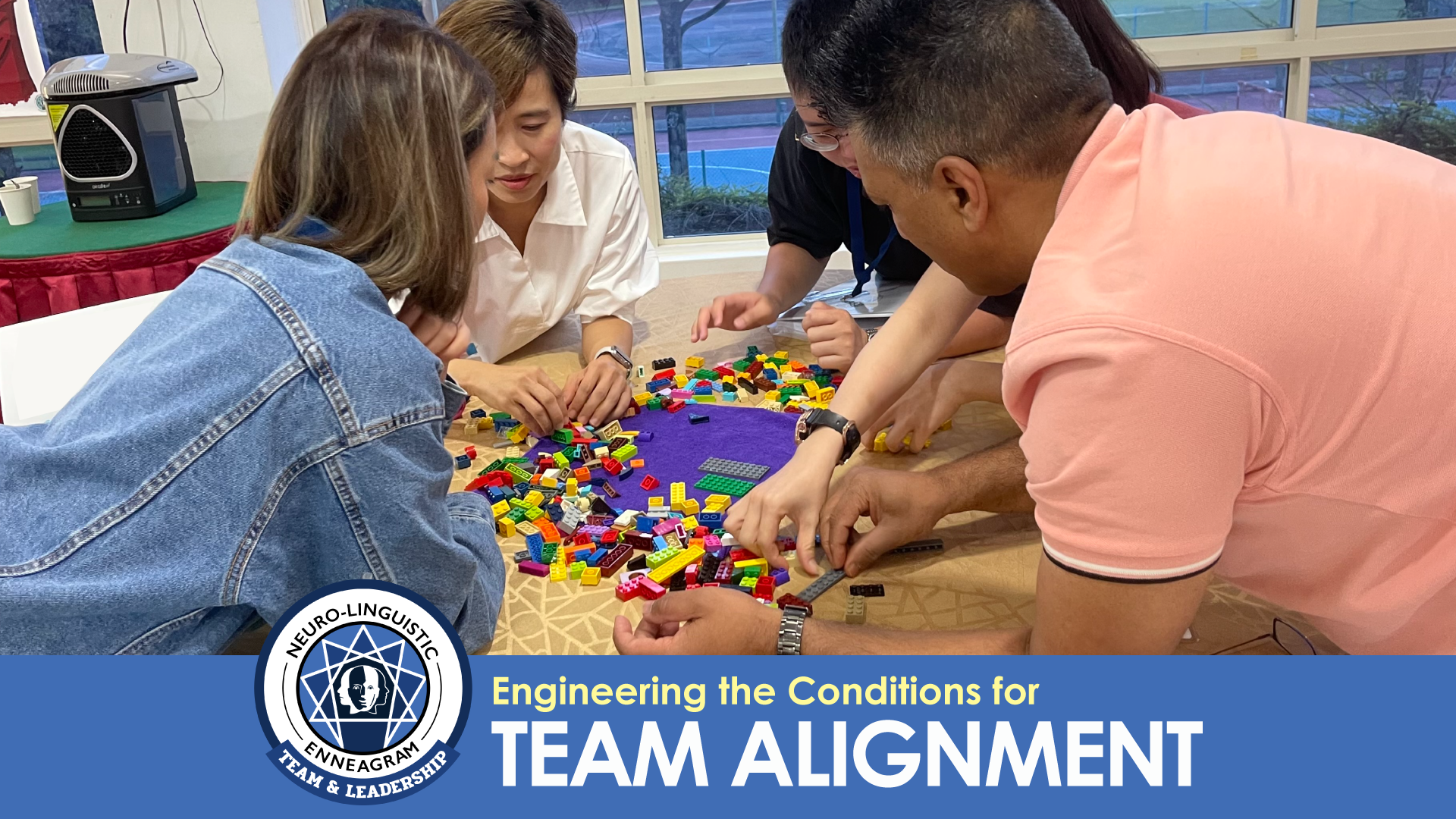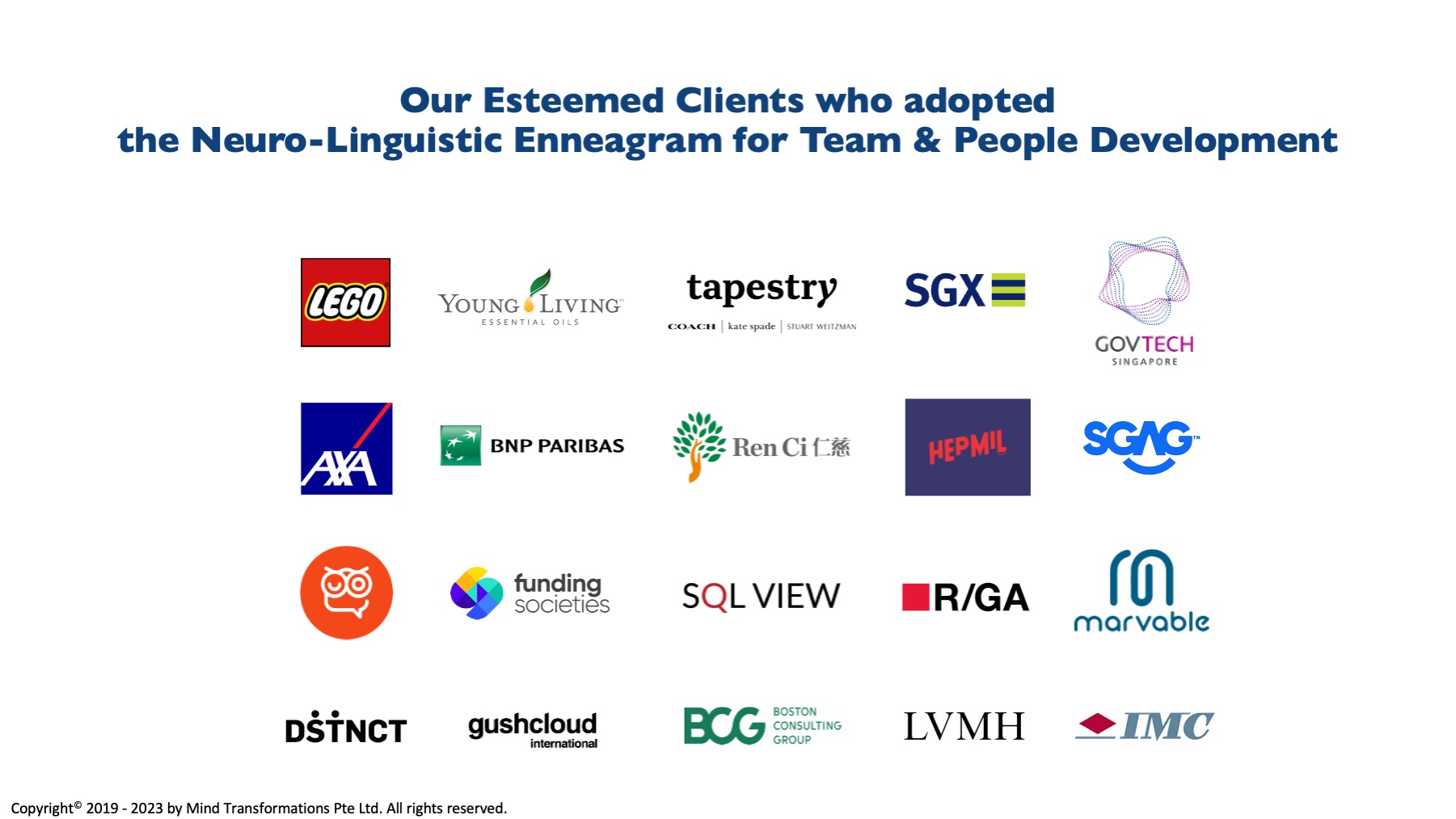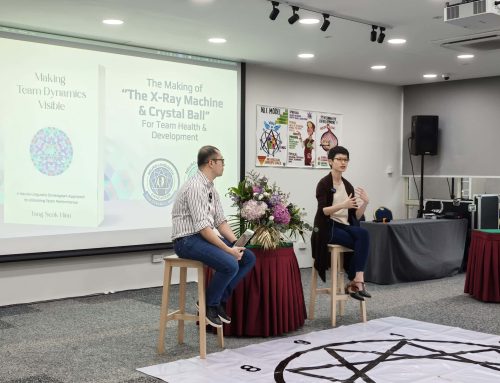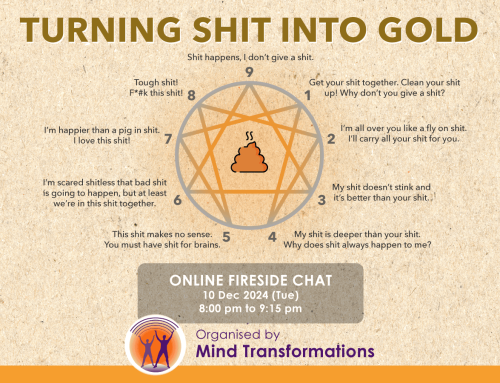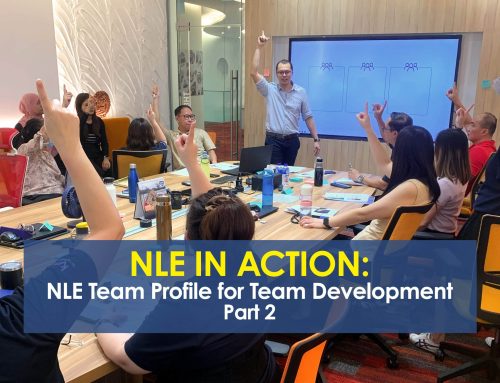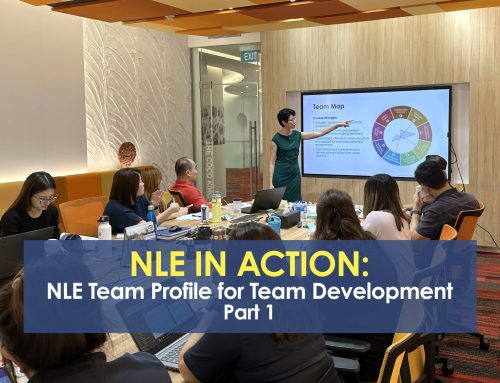In 2022, Seok Hian and I were conducting an Enneagram workshop for a luxury brand to enhance their working dynamics. We opened the afternoon segment with an experiential activity.
Within the first five minutes, the team’s reactive dynamic started to show. Some team members became very task-focused and started to drive other members. This caused some members to withdraw and play small in the activity.
Seok Hian and I were not surprised, because we had predicted exactly this the day before.
How did we make such an accurate prediction?
When we run Enneagram training for organisations and teams, all participants within a team would undergo the Neuro-Linguistic Enneagram (NLE) personality profiling. We use the individual NLE profiles to generate an NLE Team Profile. This team profile helps us predict the possible team dynamics that would show up when the team is put to handle ambiguous tasks that need trust and collaboration.
All data tells a story. The NLE Team Profile is like the X-ray machine that tells the inside story of a team.
We built this tool because we had many experiences where even if a team were to know one another’s personality types, they did not know how to work together and become a high-performing team.
We wanted a tool that could objectively elaborate the unspoken dynamics of a team - even before meeting any of the team members in person. This information, when validated by the team, it puts the team’s challenges and desires on the table. It greatly simplifies our work as consultants, trainers and facilitators and increases our effectiveness in team development projects.
Let’s look at what’s in the NLE Team Profile. It looks simple but packs very useful predictive analytics about a team.
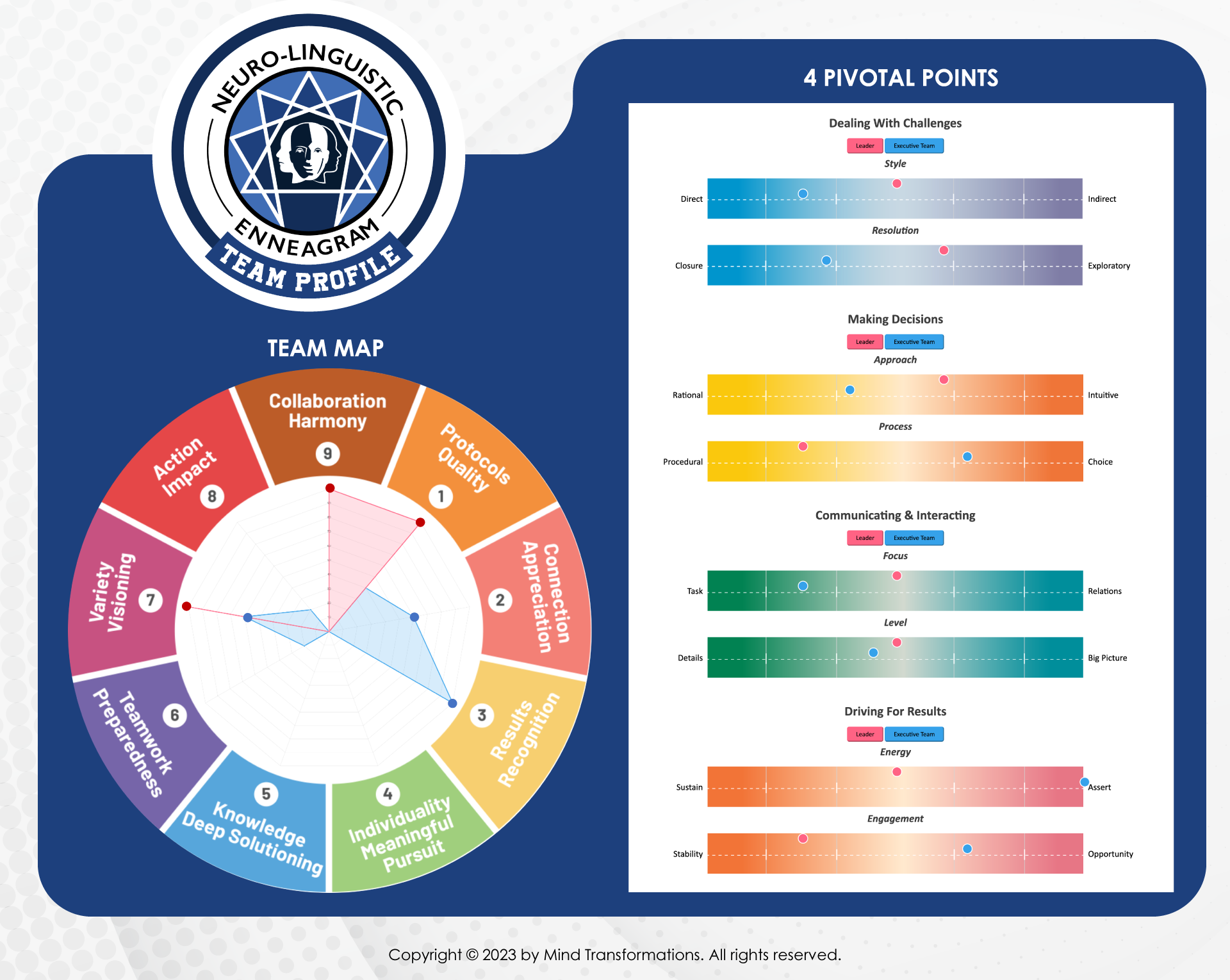
In my article about the NLE Profile, I described its deep insights into a person’s motivation and unconscious patterns. When we bring together the NLE Profile of all team members to derive a Team Map, the obvious psychological makeup of the team will start to emerge.
Now, you can see:
If you layer the team leader’s NLE Profile over the Team Map, you will see more dimensions that impact team performance. What the leader considers as priorities (or non-priorities), and the leader’s motivation and behavioural patterns - these shape the team’s expectations and unspoken dynamic.
By now, we are sitting on very powerful insights. But insights alone cannot produce healthy teams, we need an effective alignment process.
In a team with a less-than-healthy dynamic, often, there is an “elephant in the room”, the undesirable things that no one is willing to discuss. It could be the team’s relationship with the leader, or issues that were swept under the carpet. Over time, the team just tolerates the intermittent inconveniences, not knowing the price they pay and the missed opportunities in the longer term.
In healthy teams, most people may find that there is no need to talk about team dynamics when everyone seems to be performing. But performance does not mean optimised growth in the longer run.
To enable team alignment to take place, we use a facilitation process.
Using the NLE Team Profile and the FEAT debriefing process, a facilitator will be able to effect a safe space and objectively present all the observations and data points about a team. Coupled with facilitation skills and frameworks, we can conduct alignment conversations to co-create new understanding and action plans.
At the workshop for the luxury brand, our experiential activity served as a catalyst for the team to build awareness and alignment.
How the team would be like if they had a healthy team dynamic. Specifically, some of the markers of team alignment, their strengths and possible development opportunities.
How the team would be like if they had an unhealthy team dynamic. Such as, the unexpected opportunity costs, long-term costs they would incur and possible unintended consequences.
In an earlier segment, the team already gained a basic understanding of the Neuro-Linguistic Enneagram personality typology. They could easily relate with our objective observations of the patterns of their behaviour in the activity.
Several team members commented in this way as more members spoke up and discussed the issues simmering below the surface.
At this point, we knew that the team was moving towards alignment. It was time for Seok Hian and I to take a back seat and hand them the reins to take things forward.
Alignment does not happen by chance. With the right intentions and processes, you can engineer the conditions for alignment.
The NLE Team Profile offers a framework and the system to build alignment, through:
The NLE Team Profile does the heavy lifting on the insights, to allow people to gain awareness. As facilitators and consultants, our ability to facilitate safe conversations helps people to turn insights into clear actionables.
This is the beautiful thank you message we received from the leader one week after the workshop:
The NLE Team Profile facilitation is a piece of work that we are confident many teams would benefit from.
Facilitators and trainers, imagine how you can increase the impact you deliver with your team development work and grow your practice by incorporating the NLE Team Profile in your practice.
We invite you to start your journey with us with the NLE Practitioner Certification, and then continue on to the NLE Team Dynamics Analyst Certification, where you will be certified to apply the NLE Team Profile in your practice to amplify the impact you deliver.
=======
Mind Transformations is Singapore's most established training provider in Neuro-Linguistic Programming, Neuro-Linguistic Enneagram and ICI Coach certification programmes.
Founded in 1997 | Over 4,000 graduates | Singapore • Mauritius • Thailand • Vietnam
We leverage research to empower the breakthrough and transformation you seek.

